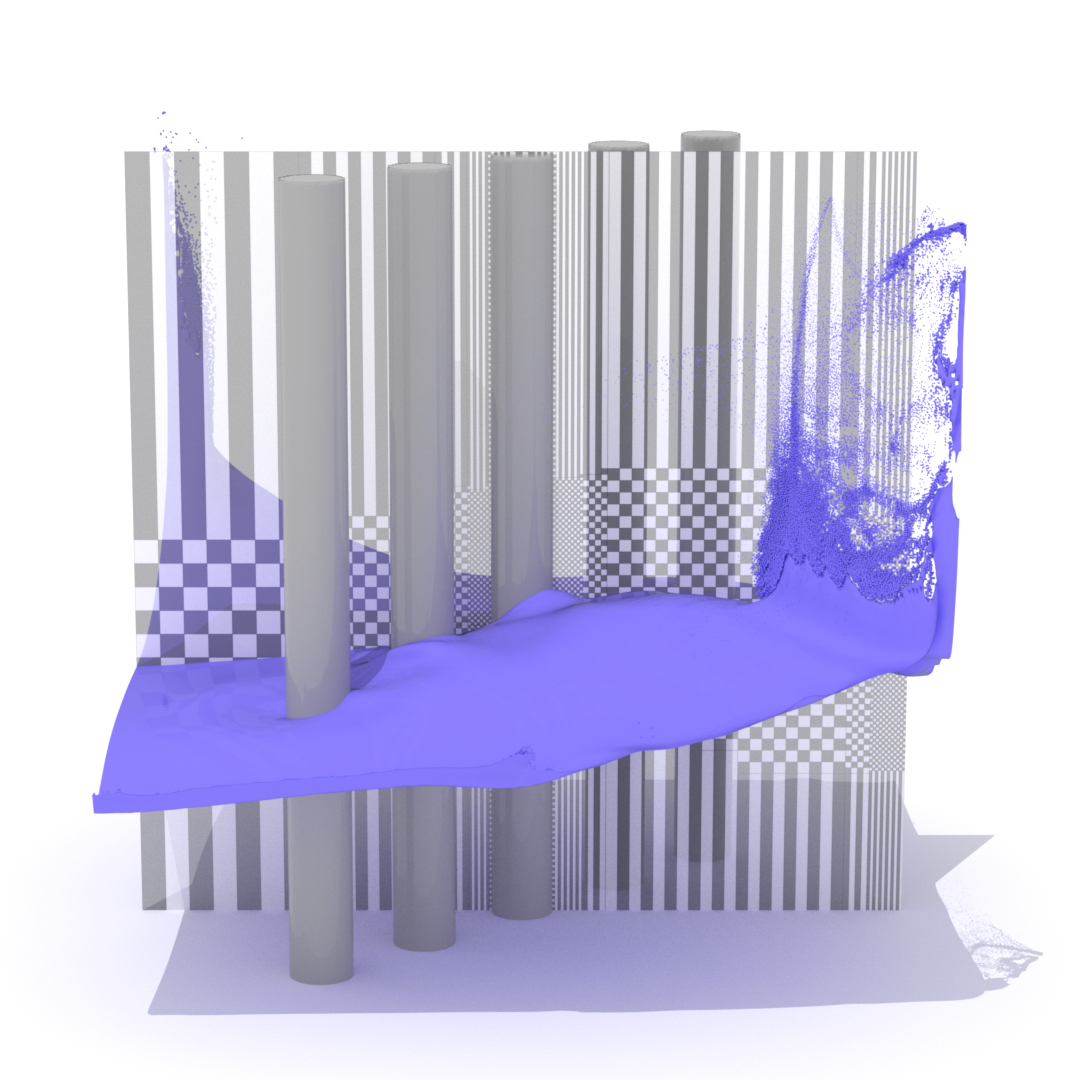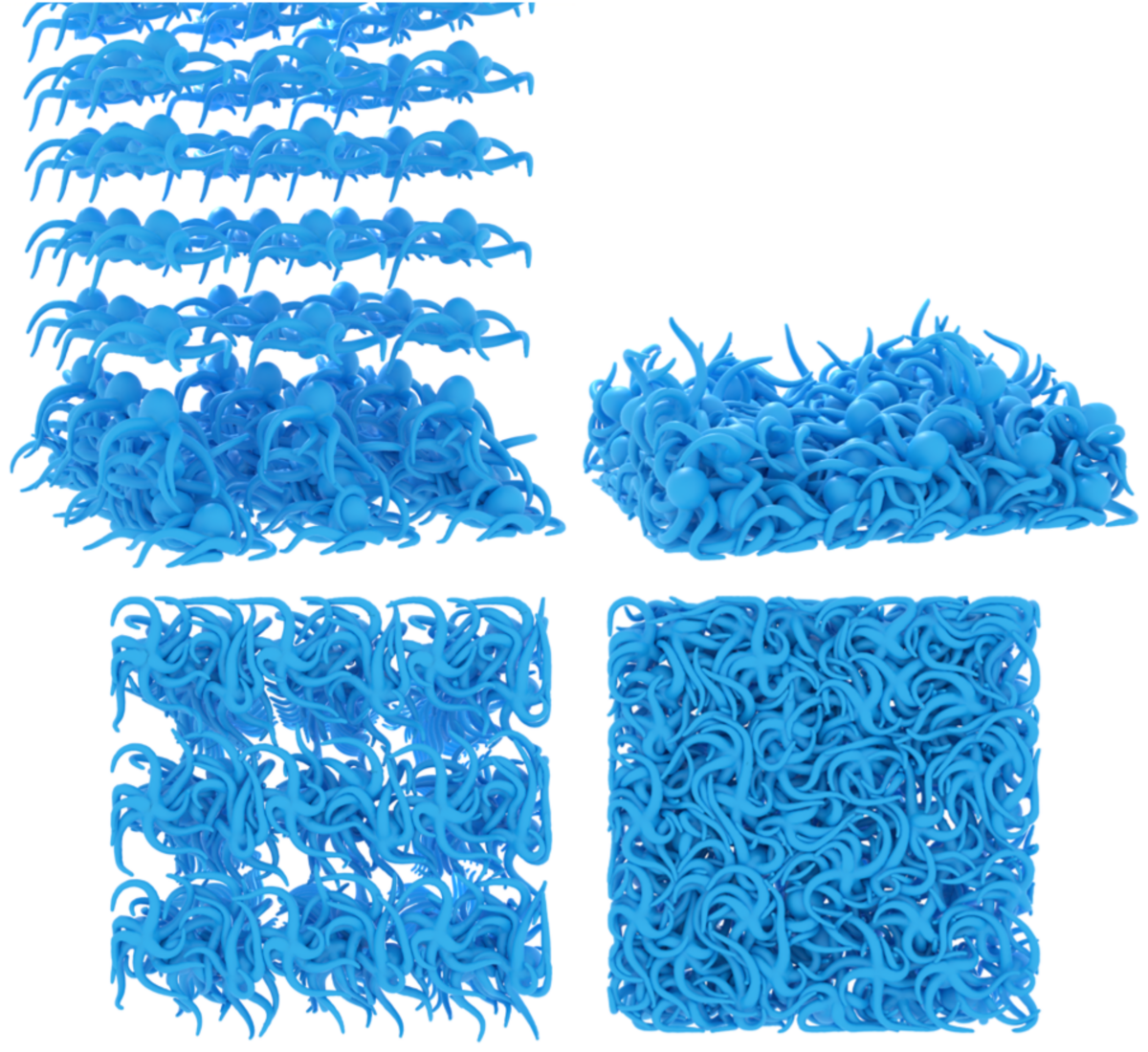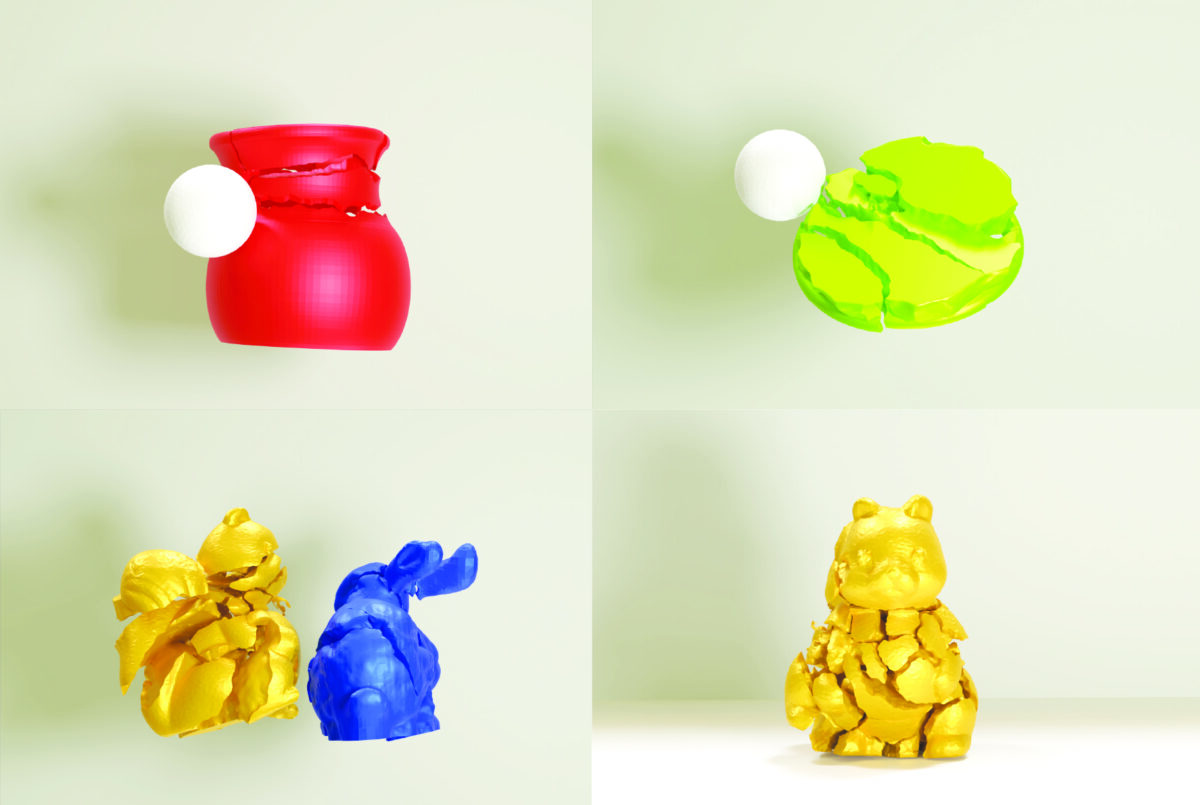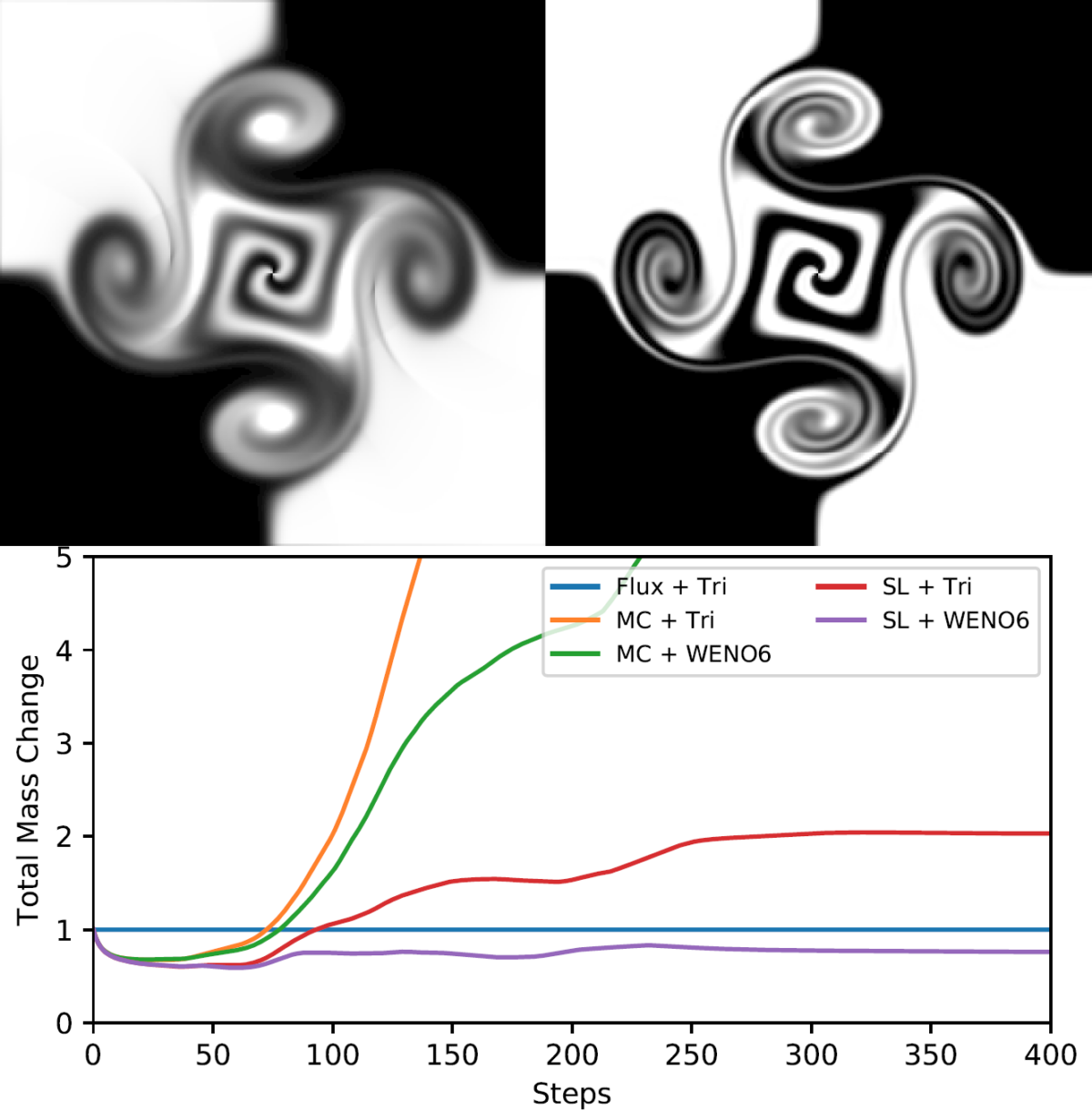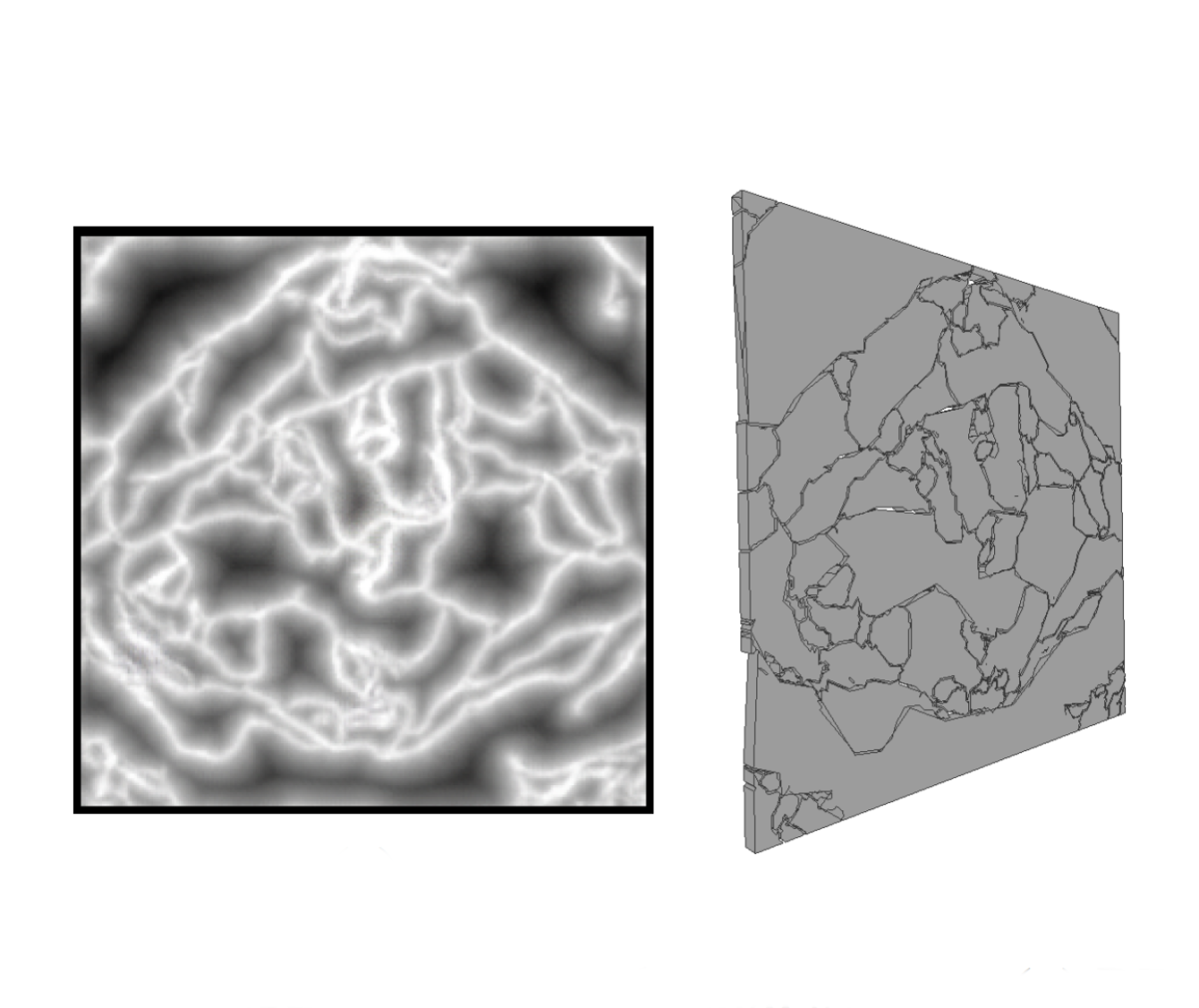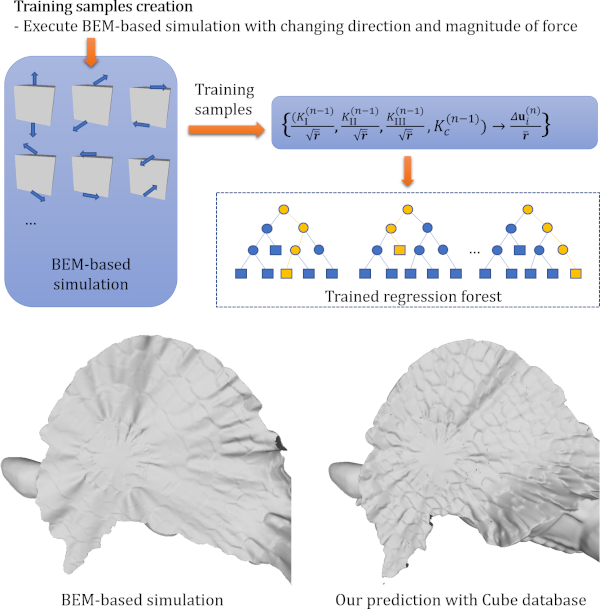This paper introduces a novel grid structure that extends tall cell methods for efficient deep water simulation. Unlike previous tall cell methods, which are designed to capture all the fine details around liquid surfaces, our approach subdivides tall cells horizontally, allowing for more aggressive … Continue reading “Quadtree Tall Cells for Eulerian Liquid Simulation”
Category: Physics Based Animation
A Unified Discrete Collision Framework for Triangle Primitives
We present a unified, primitive-first framework with DCD for collision response in physics-based simulations. Previous methods do not provide sufficient solutions on a framework that resolves edge-triangle and edge-edge collisions when handling self-collisions and inter-object collisions in a unifie … Continue reading “A Unified Discrete Collision Framework for Triangle Primitives”
DeepFracture: A Generative Approach for Predicting Brittle Fractures with Neural Discrete Representation Learning
In the field of brittle fracture animation, generating realistic destruction animations using physics-based simulation methods is computationally expensive. While techniques based on Voronoi diagrams or pre-fractured patterns are effective for real-time applications, they fail to incorporate collisi … Continue reading “DeepFracture: A Generative Approach for Predicting Brittle Fractures with Neural Discrete Representation Learning”
Detail-Aware Deep Clothing Animations Infused with Multi-Source Attributes
This paper presents a novel learning-based clothing deformation method to generate rich and reasonable detailed deformations for garments worn by bodies of various shapes in various animations. In contrast to existing learning-based methods, which require numerous trained models for different garmen … Continue reading “Detail-Aware Deep Clothing Animations Infused with Multi-Source Attributes”
Reducing Computational Costs of Small Steps Method in Projective Dynamics
In this paper, we present a strategy to decrease the computational demands of the Small Steps Method in Projective Dynamics, which serves to simulate elastic bodies. The balance between simulation quality and computational effort remains a persistent challenge in computer graphics (CG) for interacti … Continue reading “Reducing Computational Costs of Small Steps Method in Projective Dynamics”
A Flux-Interpolated Advection Scheme for Fluid Simulation
We propose a new advection scheme for fluid simulation that improves both conservation and numerical diffusion. Our work differs from previous works in that we re-formulate interpolation as the cell-face flux of a vector field instantly constructed from a scalar field, rather than a per-point evalua … Continue reading “A Flux-Interpolated Advection Scheme for Fluid Simulation”
Brittle Fracture Shape Generation of 2D Planes Using Deep Learning
Brittle fracture of plane shape objects, such as glass and concrete, is often seen in the real world. Fracture animation of rigid bodies provides impressive effects by using physics-oriented simulation. However, simulation costs become too high when physics-oriented simulation approaches are chosen … Continue reading “Brittle Fracture Shape Generation of 2D Planes Using Deep Learning”
Data-Driven Approach for Simulating Brittle Fracture Surfaces
In this paper, we propose a novel data-driven method that uses a machine learning scheme for formulating fracture simulation with the Boundary Element Method (BEM) as a regression problem. With this method, the crack-opening displacement (COD) of every correlation node is predicted at the next frame … Continue reading “Data-Driven Approach for Simulating Brittle Fracture Surfaces”
Data-driven Subspace Enrichment for Elastic Deformations with Collisions
We propose an efficient data-driven enrichment approach to adaptively enhance the expressivity of subspaces for elastic deformations with novel collisions. In general, subspace integration method (also known as model reduction) for elastic deformations can greatly increase simulation speed. However, … Continue reading “Data-driven Subspace Enrichment for Elastic Deformations with Collisions”
Adding Visual Details Based on Low-Resolution Energy Cascade Ratios for Smoke Simulation
We propose a method for adding visual details to fluid animation while reducing noisy appearances. In grid-based fluid simulations, an issue is that while highly detailed fluids with small eddies can be obtained by increasing the number of grid cells, it costs much more computational time. To addres … Continue reading “Adding Visual Details Based on Low-Resolution Energy Cascade Ratios for Smoke Simulation”
